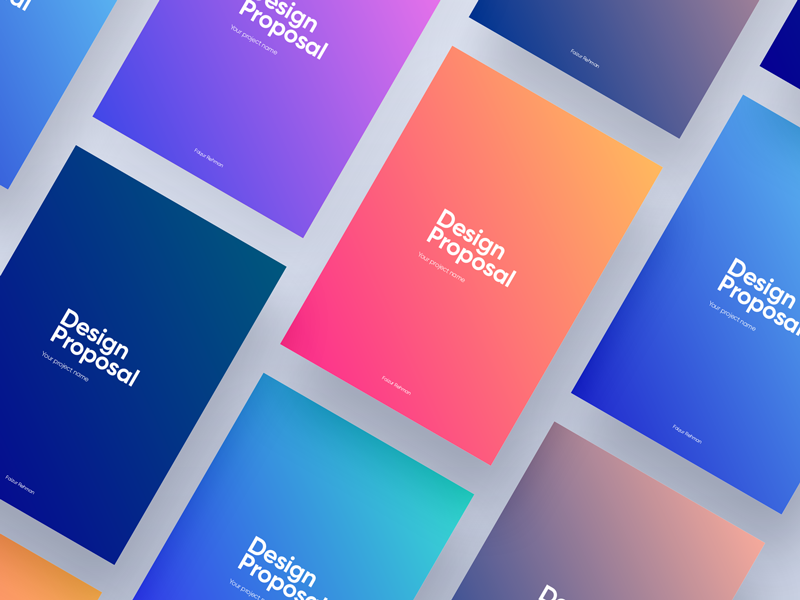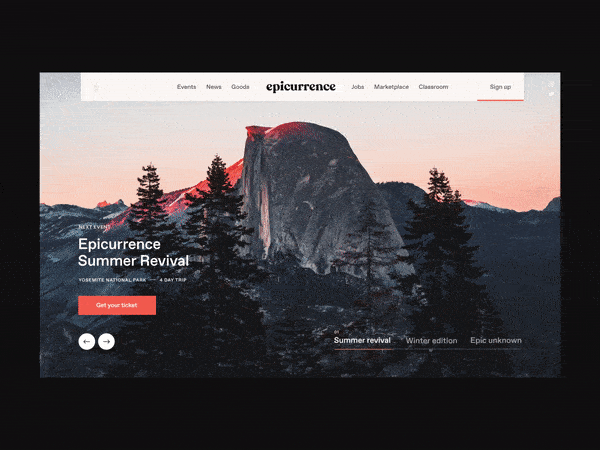As a professional web designer or developer, you will often come across web-related online projects with room for improvement. After all, you will quickly notice small discrepancies such as slow load times or high bandwidth use from some websites – problems which could easily be avoided.
According to Moto CMS, 94% of potential clients turn away from purchase due to poor or inconsistent web design, with 38% giving up on the website altogether as a result. While most web-related projects start with a design brief from the client, the same logic can be applied by a professional developer via a written proposal. The design proposal can then be sent to a would-be client to gauge whether or not they themselves see the benefit of hiring you to make their online services better.
With that in mind, let’s take a look at several steps and guidelines which can help you to write proposal documents for web design or development projects. These will not only help you land more projects but also develop your own writing style and reputation as a proactive web developer.
Outline the Main Issues
The first order of business in terms of writing a web design proposal is to outline the main issues your potential client is facing. These “issues” can be anything from a complete lack of a website or an eCommerce store to technical or design-related issues present on the site.
Make sure to review the entire website for potential problems and gauge your own skills in terms of whether or not you can commit to a project of that scale. Format the issues you’ve discovered in a bulleted paragraph with attached screen grabs to further illustrate your point.
Limit your jargon to understandable, everyday words and add hyperlinks into any term such as “CMS”, “Java” or “WordPress” you might need to add. It’s always best to assume that your client isn’t tech-savvy in terms of web design or development – help them understand the underlying issues through written descriptions.
Present an Optimal Solution
Separate your “Issues” and “Solutions” segments into separate sections to avoid confusion or an overload of information. Presenting your clients with pressing issues will allow them to think about the current situation and realize that, yes; there is a problem worth exploring.
Once the Solutions segment comes around, you should provide your clients with actionable, step-by-step fixes, updates and upgrades to existing infrastructure. Don’t propose total redesign projects if there is base code available to work with – this will ensure that a client isn’t pushed into a decision they don’t like. Acknowledge the good aspects of existing web design or development project and explain what you can do to make things better.
It’s also worth adding a post scriptum about the after-state of their website or service once you have implemented your solutions. Adding numbers, percentages and positive data will further improve your chances of landing the project.
Offer a Development Roadmap
As we’ve previously mentioned, you might not have the privilege to work with tech-savvy clients on their web design or development projects. Beyond the solutions you offer in your proposal, you should also provide the client with a development roadmap.
The roadmap should consist of smaller milestones, goals, and KPIs in relation to the main issues your client is facing. You should also provide a concrete deadline for deliverable results and final implementation of your fixes.
A visualized roadmap with concrete information, development processes, and outlined results will work wonders in your favor. After all, very few clients will be willing to accept your design proposal without a detailed look at what it is that you want to do.
List your Skills & Expertise
You should absolutely list your own skills, professional experience, and other important information to your client before presenting them with pricing. Asking someone to pay X amount of dollars for a project without presenting your own skillset beforehand simply won’t work.
Add information such as formal education, professional employment, courses, seminars, and other personal development details. Avoid sending your motivational letter with the proposal since you are looking for a one-time collaboration on an issue your client can’t get rid of.
Depending on how well-established you are in the industry, you can also add hyperlinked portfolio pieces via platforms such as Behance. Paint the picture of a professional web developer which your client can trust with their brand name, time and resources.
Estimate the Costs of Development
In order to avoid confusion or misunderstanding in terms of price negotiation, you should add a section on pricing to your design proposal. Make sure to cover the obvious points such as domain purchase or upkeep, visual content costs and so forth depending on the project.
At the end of the list, add a separate paragraph or column pertaining to your own price in addition to the first segment. After all, the fact that a client would have to buy a new domain name or WordPress themes and plugins isn’t going to add to your revenue.
Be as transparent as possible when it comes to pricing and offer a comparison of your price to popular design sites such as 99designs. This will further solidify your offer as legitimate and help you avoid suspicion in terms of your pricing.
Include Contact Information
Lastly, your design proposal should include up-to-date contact information. Depending on the communication channel you’ve established with your client (via email, social media, etc.), you can add a number of contact options to the proposal.
Don’t include personal information such as your place of residence (especially if you work with local clients). You can spruce up your LinkedIn profile and use it as a way of introducing your client to your body of work and professional network.
Limit your contact info to phone, email and social media handles. These channels of communication will be more than enough for willing clients to get in touch with you and follow up on the proposal you’ve formed on their behalf.
In Summary
Once your design proposal is ready, all that remains is to proofread it and ship it to your client’s address. Don’t rush the process and make sure that your document is free of grammar or formatting errors.
While not every client will get back to you for a follow-up, you will still gain valuable knowledge from the process. Approach each design proposal writing process with an open and creative mind – the right clients will always find value in what you have to offer.
Banner Image by Faizur Rehman
Author Bio
Diana Adjadj is a writer and editor with a Master’s degree in Web Design. She combines her passion for writing with her interest in art, design, and marketing, creating thought-provoking content in the process. Besides working as a contributor writer for TrustMyPaper, Diana also runs her own 3to5Marketing blog. What inspires her most in her writing is the art of combining design theory with practical tips and topics.



